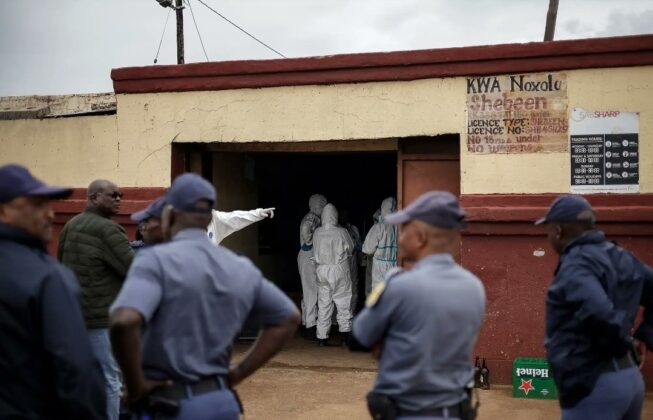
A Nigerian university has come under scrutiny after a viral video appeared to show officials checking whether female students were wearing bras before an exam. Image: Getty Images Getty Images.
(The Post News)– A Nigerian university, founded in 1982, has come under scrutiny after a viral video appeared showing officials checking whether female students were wearing bras before allowing them to sit for an exam.
The footage circulating on social media displayed two female staff members at Olabisi Onabanjo University in Ogun State, southwest Nigeria, physically inspecting female students’ chests as they queue to enter an examination hall.
Nonetheless, he admitted that the current approach to enforcing the rule was flawed and acknowledged the need for alternative methods. The policy has drawn sharp criticism, with opponents denouncing it as outdated, discriminatory, and comparable to sexual assault.
According to reports, a senior official from the campaign group Human Rights Network stated that students may have grounds to take legal action against the university for rights violations.
“Unwarranted touches on another person’s body are a violation and could lead to legal action. The university is wrong to adopt this method to curb indecent dressing,” said Haruna Ayagi.
A student, speaking anonymously to the BBC, said the university maintains a strict moral code, even though it is not a religious institution. She noted that their clothing is routinely inspected.
Amid the public backlash, the president of the university’s students’ union, Muizz Olatunji, addressed the issue on X, stating that the institution upholds “a dress-code policy aimed at maintaining a respectful and distraction-free environment, encouraging students to dress modestly and in line with the institution’s values.”
He further explained that the policy is longstanding and that the union has “engaged with the institution to explore alternative approaches to addressing indecent dressing, focusing on respectful and dignified interactions between students and staff.”
He also released the dress code policy, which prohibits any clothing “capable of making the same or opposite sex to lust after the student in an indecent manner.”



